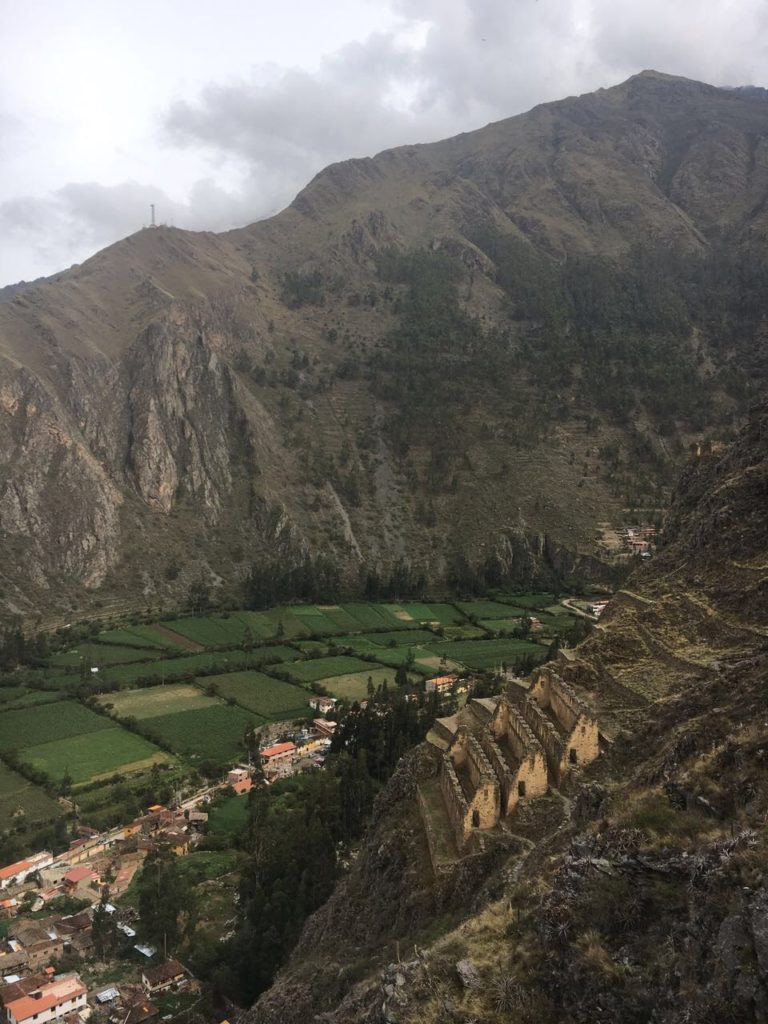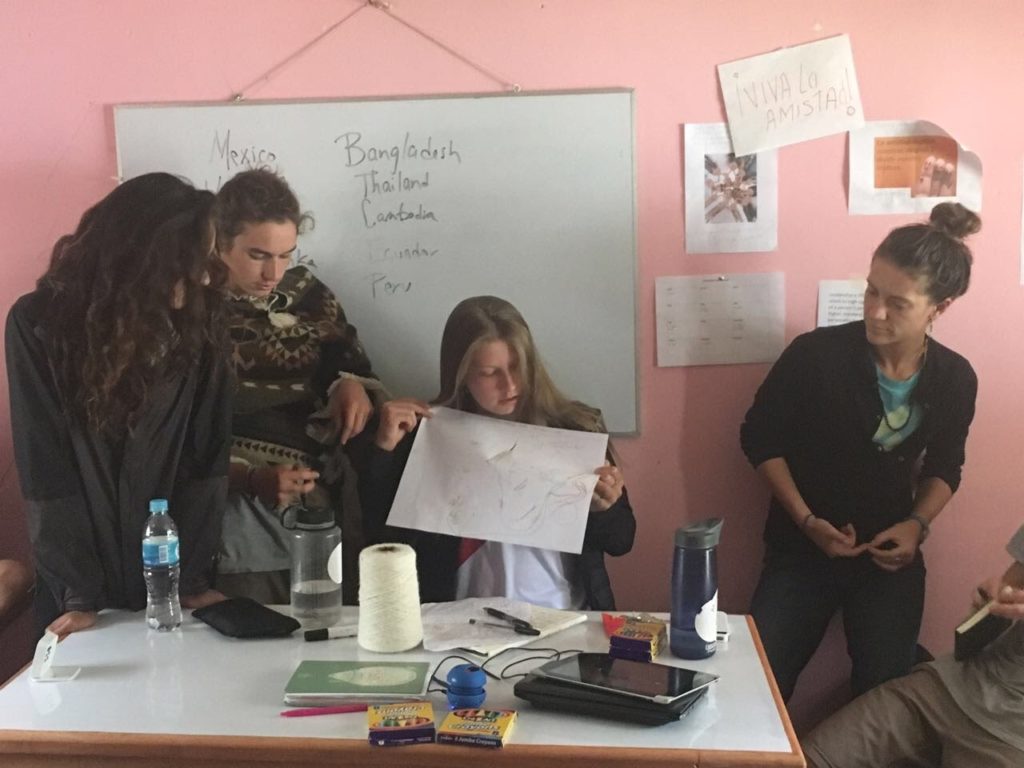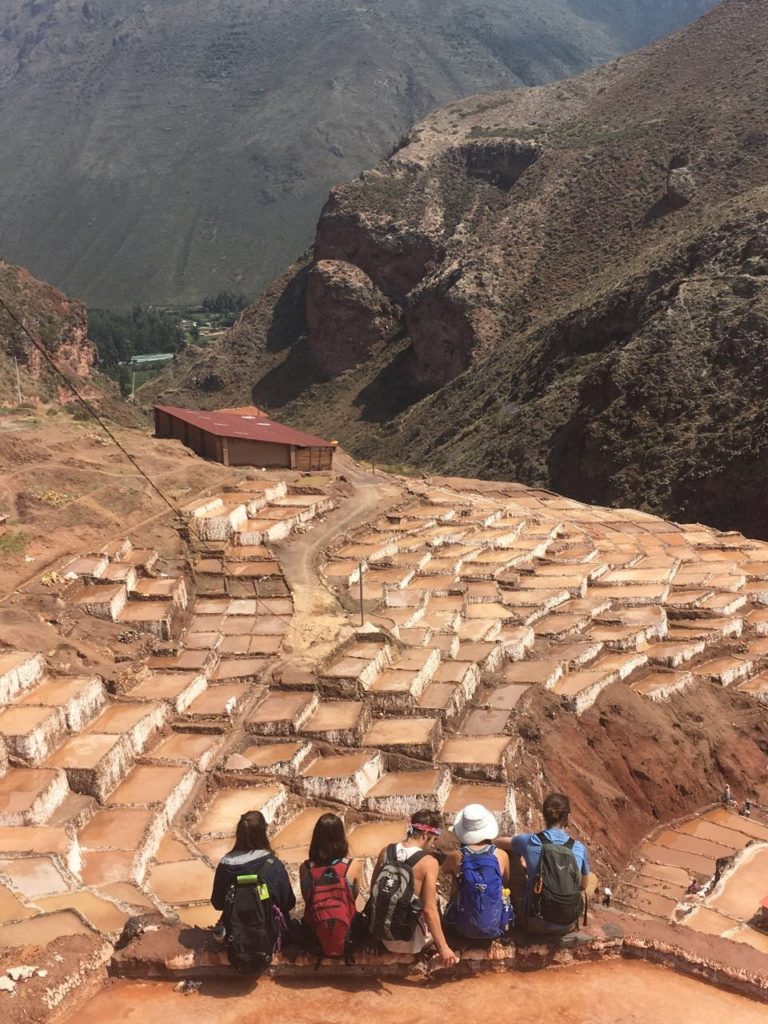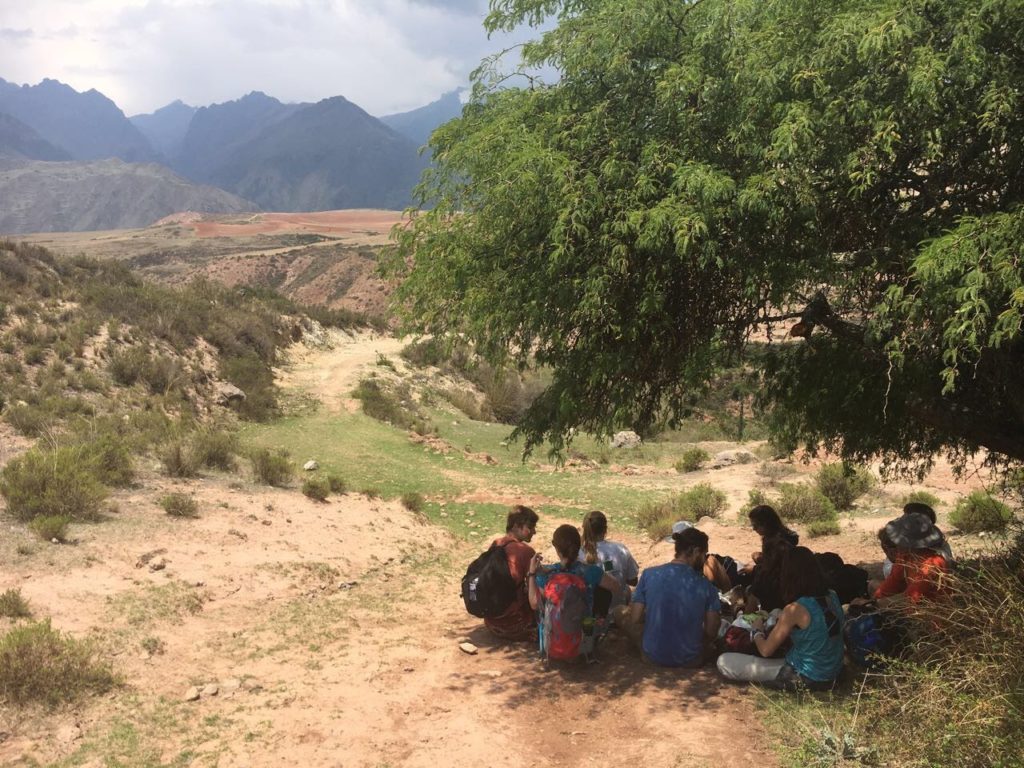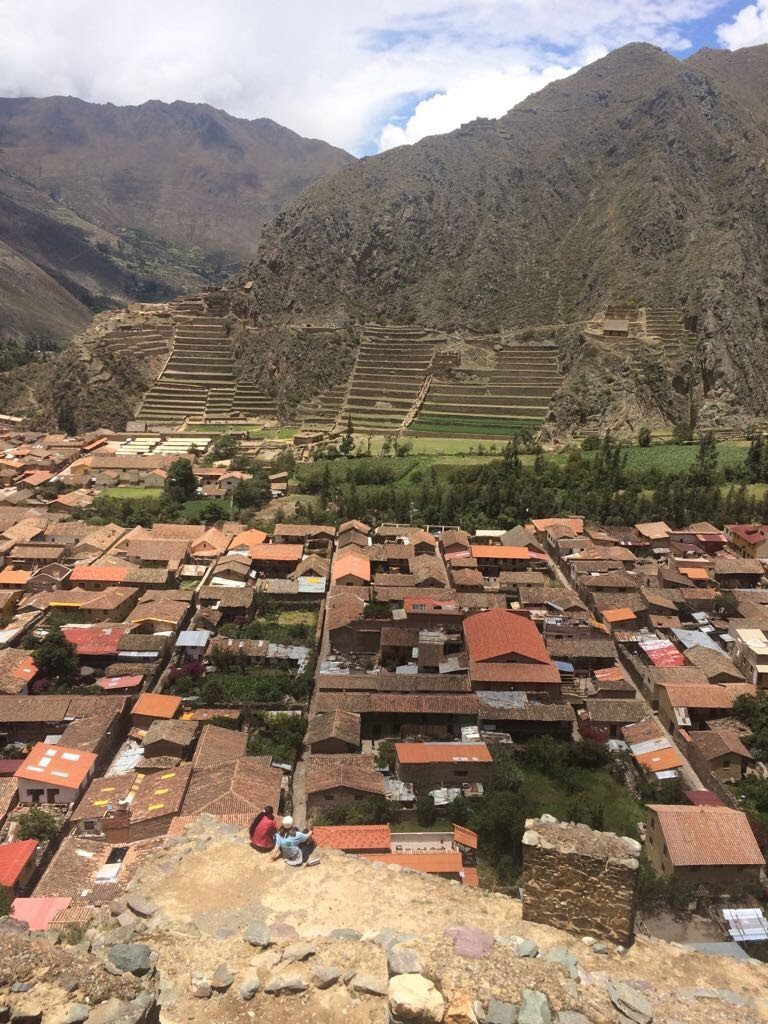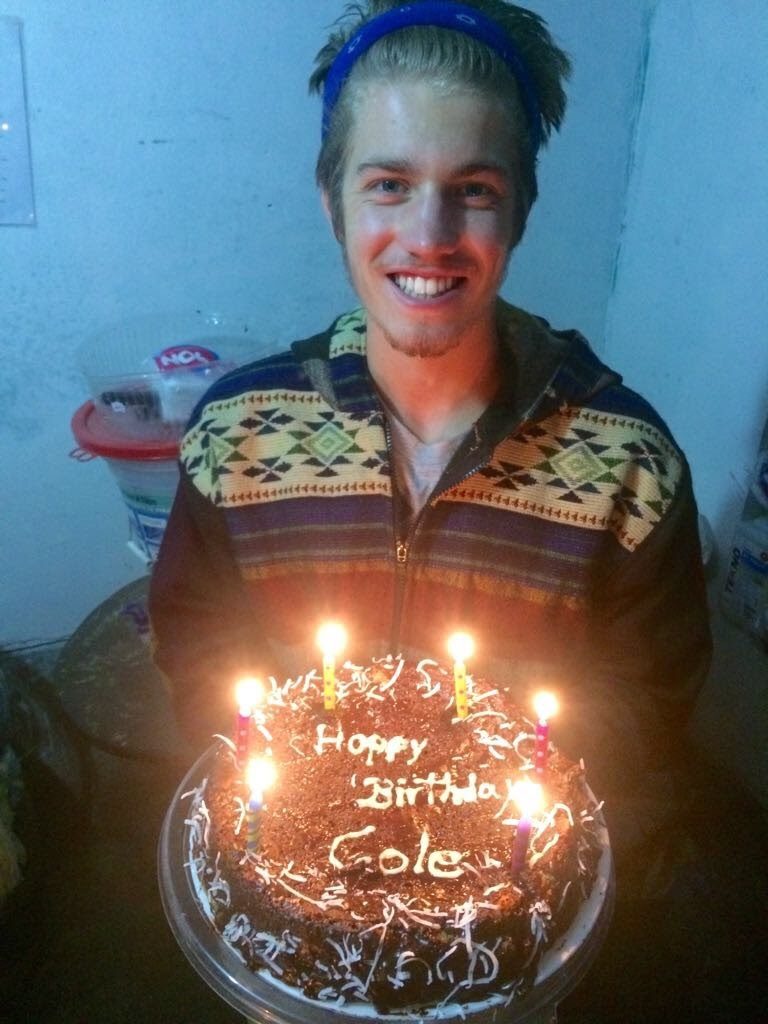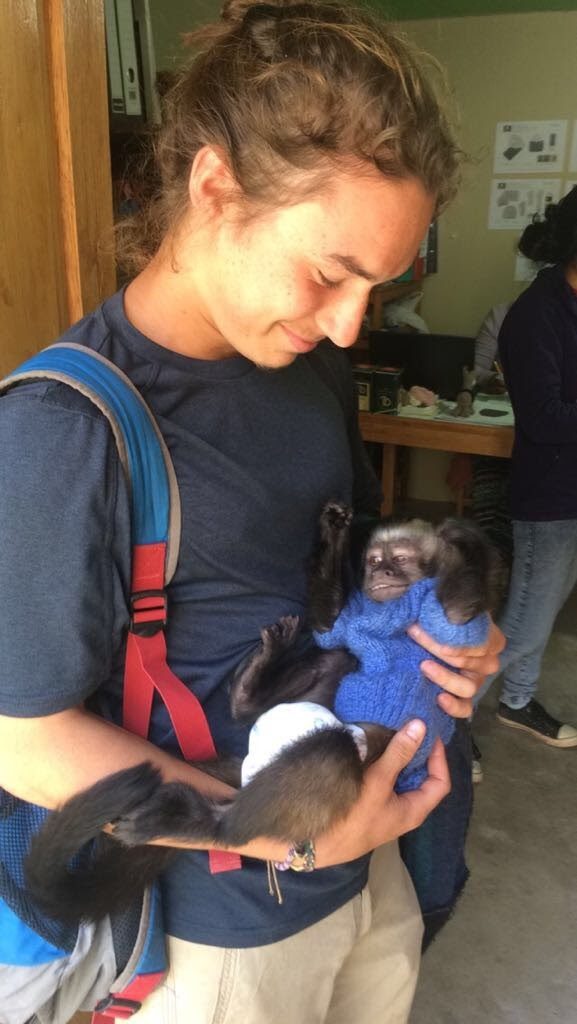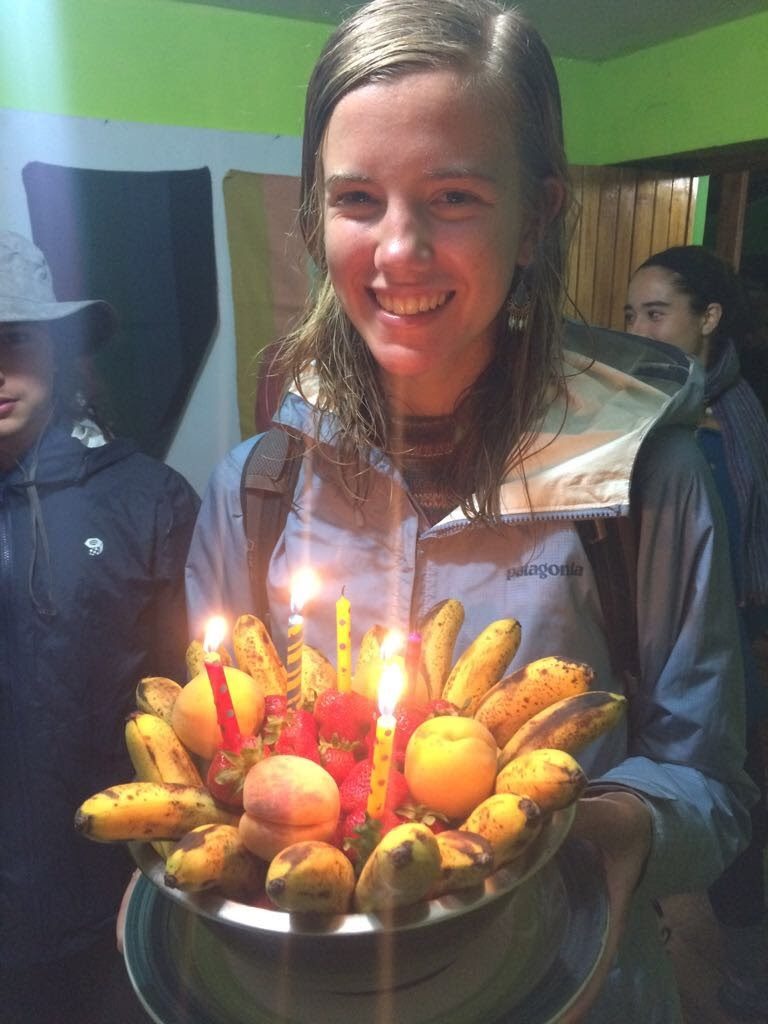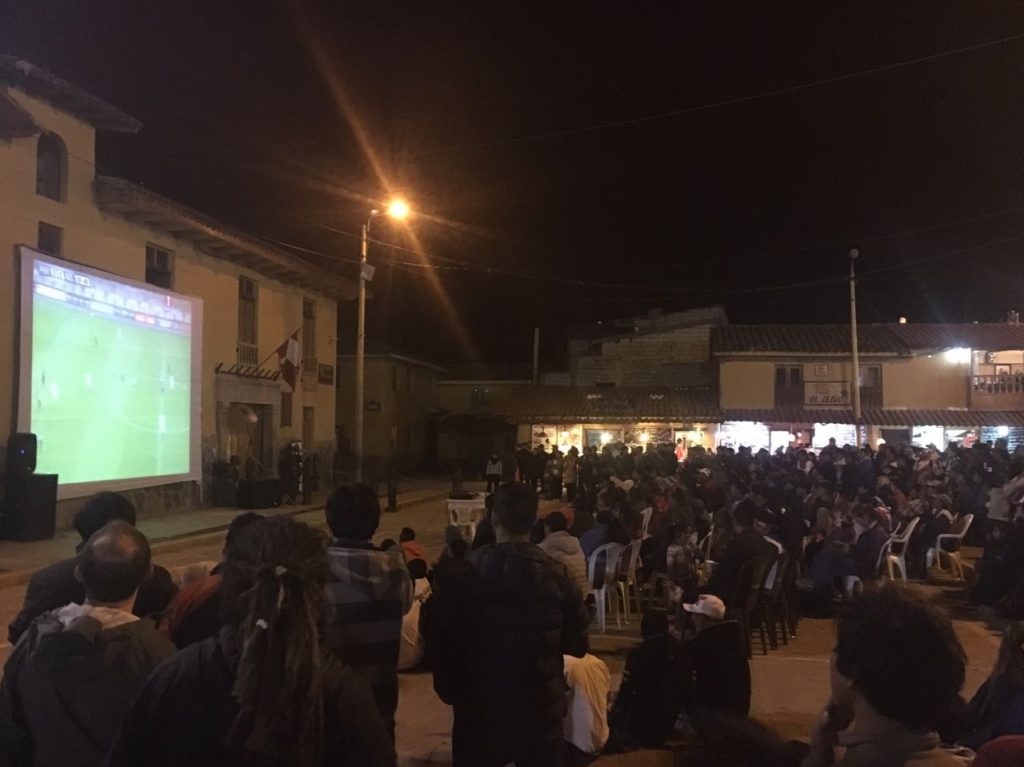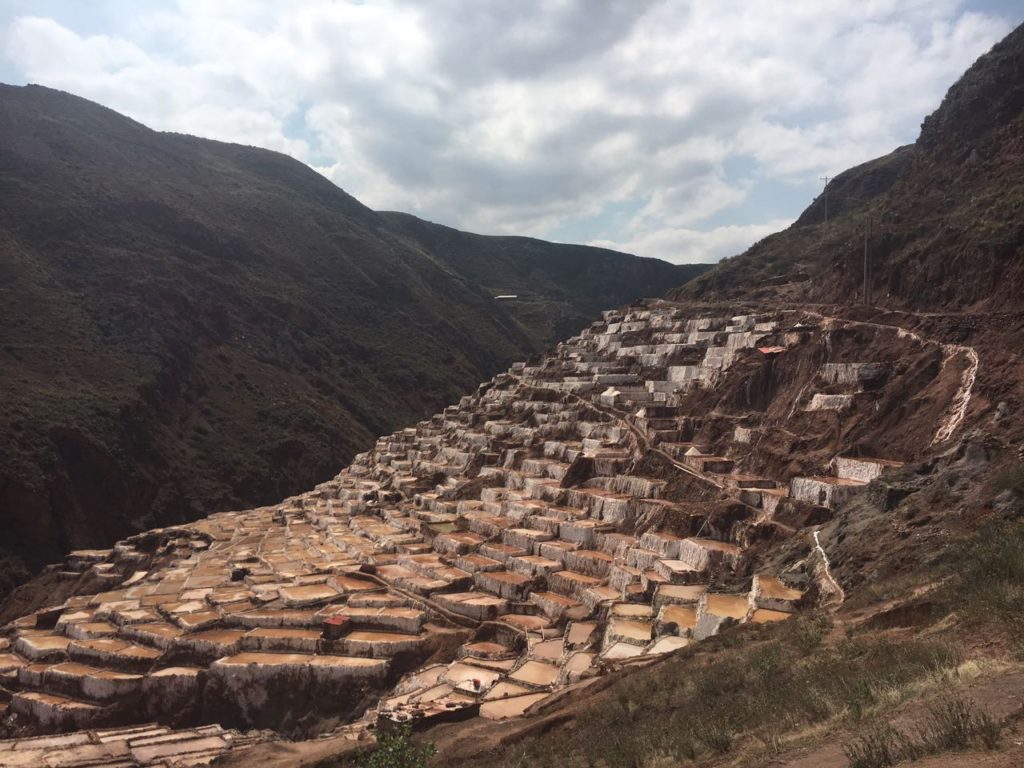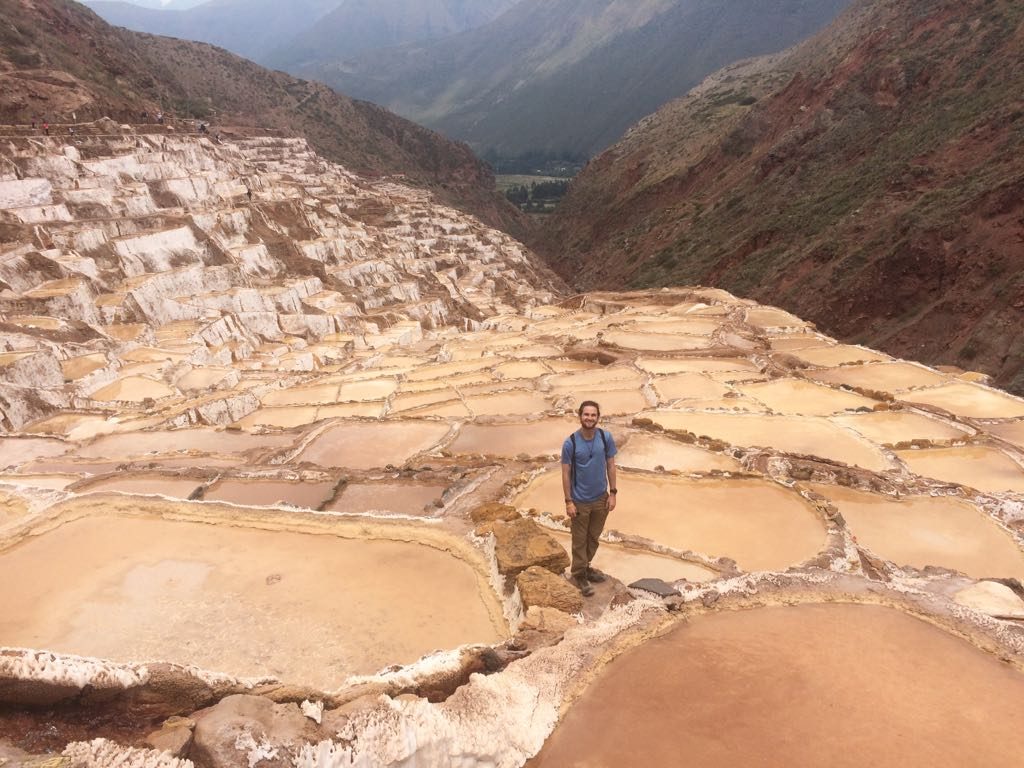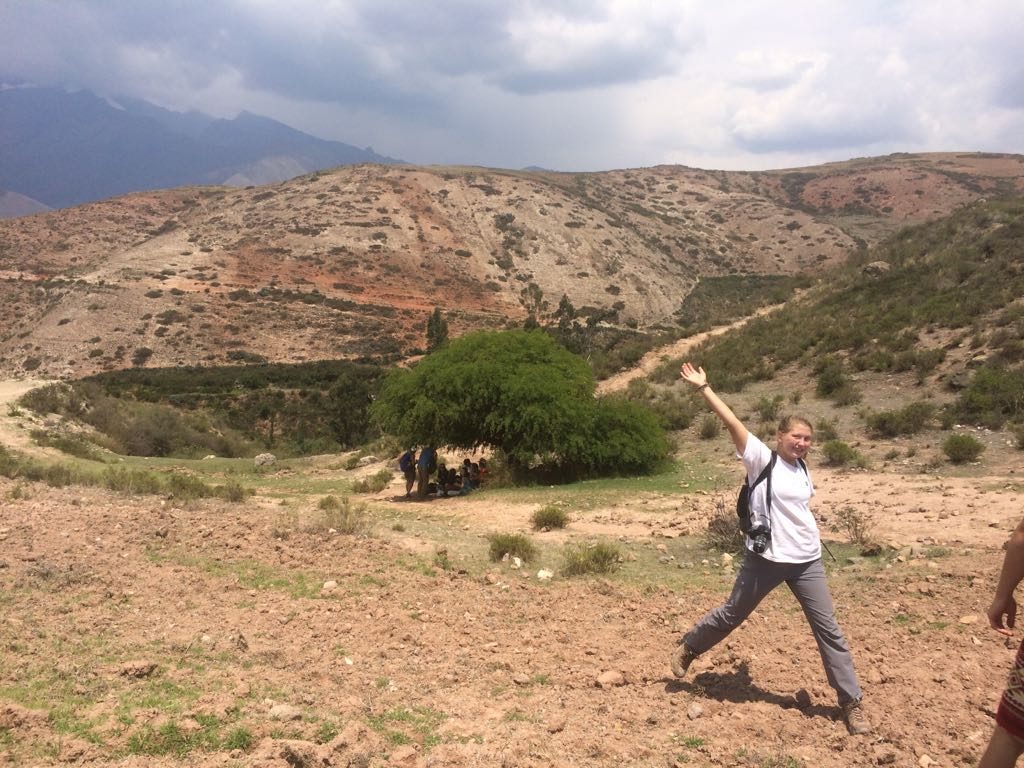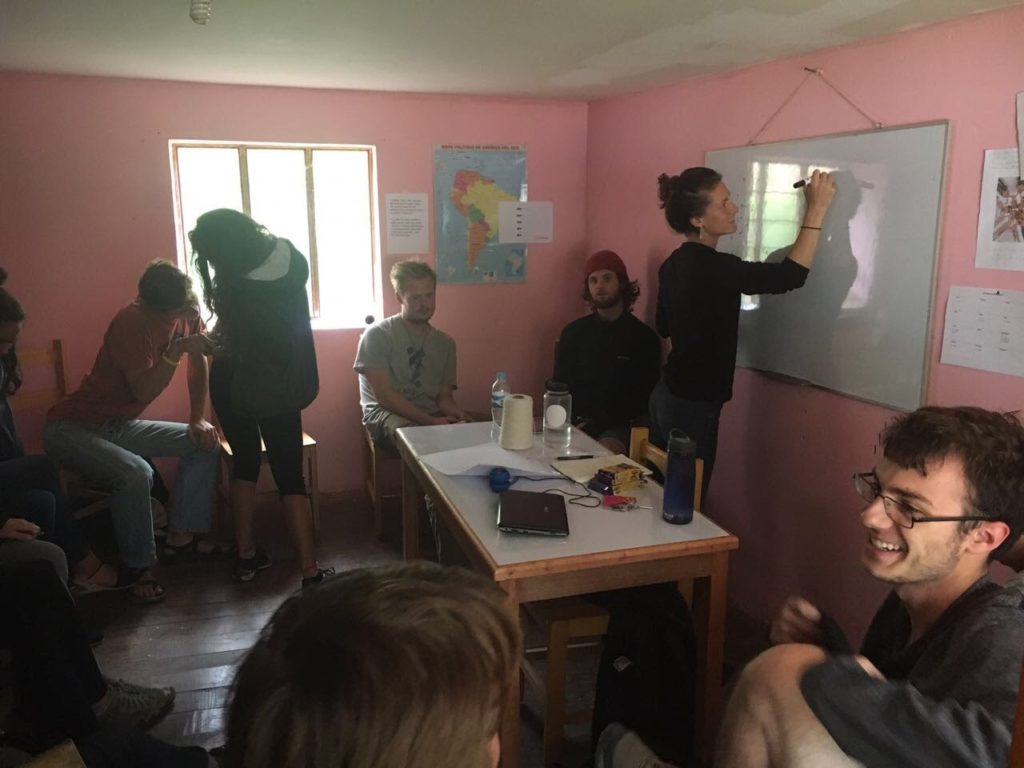Hola!
This week we arrived in the beautiful, historic town of Ollantaytambo. After a few days of mental and physical relaxation provided to us in the form of the yoga retreat, it was time for a week of learning. On Sunday around 4 we arrived in the center of town to meet our host families. Upon arrival, the group took a moment to look around at the scenery beyond the town and was completely in awe. The mountains around the little town looked seemingly fake with their jagged edges and stagnant clouds covering them. Even further out there was a snow covered peak that resembled that of the Eye of Sauron from Lord of the Rings (sorry for the obscure reference, I hope you guys understand it). After having some time admiring the beautiful scenery, we all went off with our host families. Our homestay groups of two or three people all enjoyed a solely Spanish conversation over a nice home cooked meal.
The following day we all began Spanish classes. For the students who are enrolled in the PSU Spanish class, this week was the time to write, correct and finalize our papers. All of the teachers were very accommodating and helpful with the papers, which took a lot of stress off of us because we were able to finish them. Throughout the week, the classes enjoyed a variety of different types of learning. Usually, the first half of class was spent learning new tenses and reviewing past curriculum. This was especially helpful for everyone to work on our conversational Spanish so we could further our relationships with our host stay family past “please” and “thank you”.
This week, all of the classes enjoyed some learning outside of the classroom. One day was spent walking through the cobblestone streets learning about Incan culture. The classes popped into some stores that doubled as houses. These houses were modeled after traditional Incan homes with guinea pigs running all through them, most likely soon to be dinner. We learned about the chakana (Incan cross) and its significance. The chakana is broken up into four sections. The first section (top left) represents the future, past and present. The second (top right) represents the heavens, earth, and the underworld. The third (bottom left) representing war, peace and intelligence. The final quadrant (bottom right) represents the three holy animals of the Incan people, the condor, puma, and the snake. The hole in the middle of the cross represents the city of Cusco, which was the capital of the Incan empire. The chakana is seen everywhere in Incan culture and was a very important part in understanding the history of the Incas.
Another day was spent hiking up to Incan ruins that were walking distance from the school. The ruins were supposedly a school at one time, and now the beautiful stone structure provides a great picture site for tourists.
One of the other days in class, students enjoyed a trip to the fruit market to learn about the types of fruit native to Peru and how the price of fruit differed depending on how close it was grown to Ollantaytambo. It was a tasty experience and a refreshing way to learn about the fruit and agricultural process of what it took to sell all of the different kinds of fruits.
Everyone thoroughly enjoyed their time learning this week because it was not just spent in a classroom. This proactive style of learning provided a new energy to all of the students.
In the afternoons, the group enjoyed time to themselves, since we did not have any work in the afternoons. The concept of “free time” was felt as a foriegn concept to the group because we had become accustomed to such a busy schedule from the rest of the trip. Although a little odd at first, the free time proved to be a blessing for all of us. Some members of the group were able to give a presentation for their PSU classes in the afternoons. On Wednesday, the group enjoyed two back to back presentations from Josh. In his first presentation, Josh enlightened the group on poverty and globalalization. He talked about different perceptions of poverty throughout the world. In his second presentation he explained how to build and the benefits of a biofilter. It was a nice overview of the previous biofilters the group had seen in past weeks in Pucura and Finca Mono Verde.
The followng day Brian and Matt presented. Brian furthered the groups knowledge on strip mining. The group had a basic understanding of the process of strip mining from our time spent in Junin, but Brian elegantly showed us the how extensive the process truly is. The biggest takeaway from the presentation was how much this happens in United States and how little we all knew about it. Next, Matt provided a new concept of storm water recycling. He presented the logistics of how to put this into use all over the world.
This week the group enjoyed not one, but two birthdays! On Wednesday, the group met up after dinner to celebrate Cole’s 20th birthday. An array of presents, homemade chocolate cake, Eminem blaring and many Mentos made for a very special night. On Friday, we all met up at the school to celebrate Renee’s 19th birthday! Since gluten is not a friend of Renee’s, we enjoyed a beautiful combination of fruit provided to us from the local market. The healthy dessert and listening to her favorite song ”Mr. Blue Sky”, allowed her to have a lovely first night as a 19 year old.
We also happened to be in Peru for one of the most important days in their history. Peru qualified for the 2018 World Cup by beating New Zealand 2-0! A monumental accomplishment for the country since they had not been able to qualify since 1982. Yes yes, I know a socccer tournament does not seem like the biggest deal in the world, but I can assure you that is not the case here. After dinner on Wednesday the group met in the plaza to watch the game because we had been told by our host families that there would be a showing of the game on a projector. Upon arrival, the group was able to witness hundreds of Peruvians sitting in front of a large projection on the side of the town church, eagerly awaiting the game to start. We joined the crowd and the series of chants that followed. Vamos Peru! The amount of excited that arose from the crowd once their team had scored was incredible. After the game, cheers reigned for the rest of the night. The following day was declared a national holiday as well! None of the children had school because none of the teachers showed up. The game has been talked about everyday on the news since and we have a feeling it is not going to stop being talked about any time soon.
On Saturday, the group left Ollantaytambo early in the morning and went to Las Salineras de Maras (the Maras salt mines) for a hike. These salt mines have been around since the time of the Incas and have provided salt to the surrounding communities ever since it has been around. In the time of the Incas, these salt mines provided salt to the entirety of the empire which stretched from the South of Peru all the way to southern Chile. The mines were unbelievably beautiful. Anya cheekily pointed out that the formation of the mines mirrored that of Santorini, Greece in the way that the salt mines were in a white cubic formation steeply degrading on a hill. When we got to the top of the salt mines, the group enjoyed a little shopping with prices a little more accommodating than the touristy Ollantaytambo. After some time to rest and shop, we ventured on another hour and half, passing many fields of crops and mountains full of snow. After realizing we were all pretty hungry and tired, the group decided to rest under a tree and eat our packed lunches that were generously made by our host families. It was a great place to rest and to regather our strengths for the hike back.
Tonight we break bread for one last time with our family because tomorrow we head to the Quechua-speaking town of Patacancha. Here we will be staying with and learning about indeginous Quechuan people for two nights and three days.
Thanks for tuning in to our week in Ollantaytambo! We send our love to all who are reading and wish you the best!
From,
Chris
P.S. Hi Kiana
